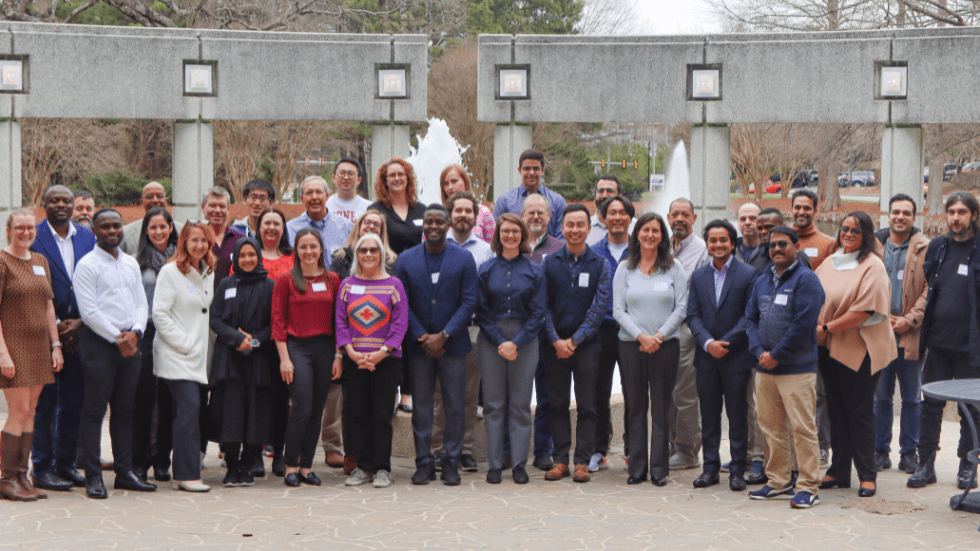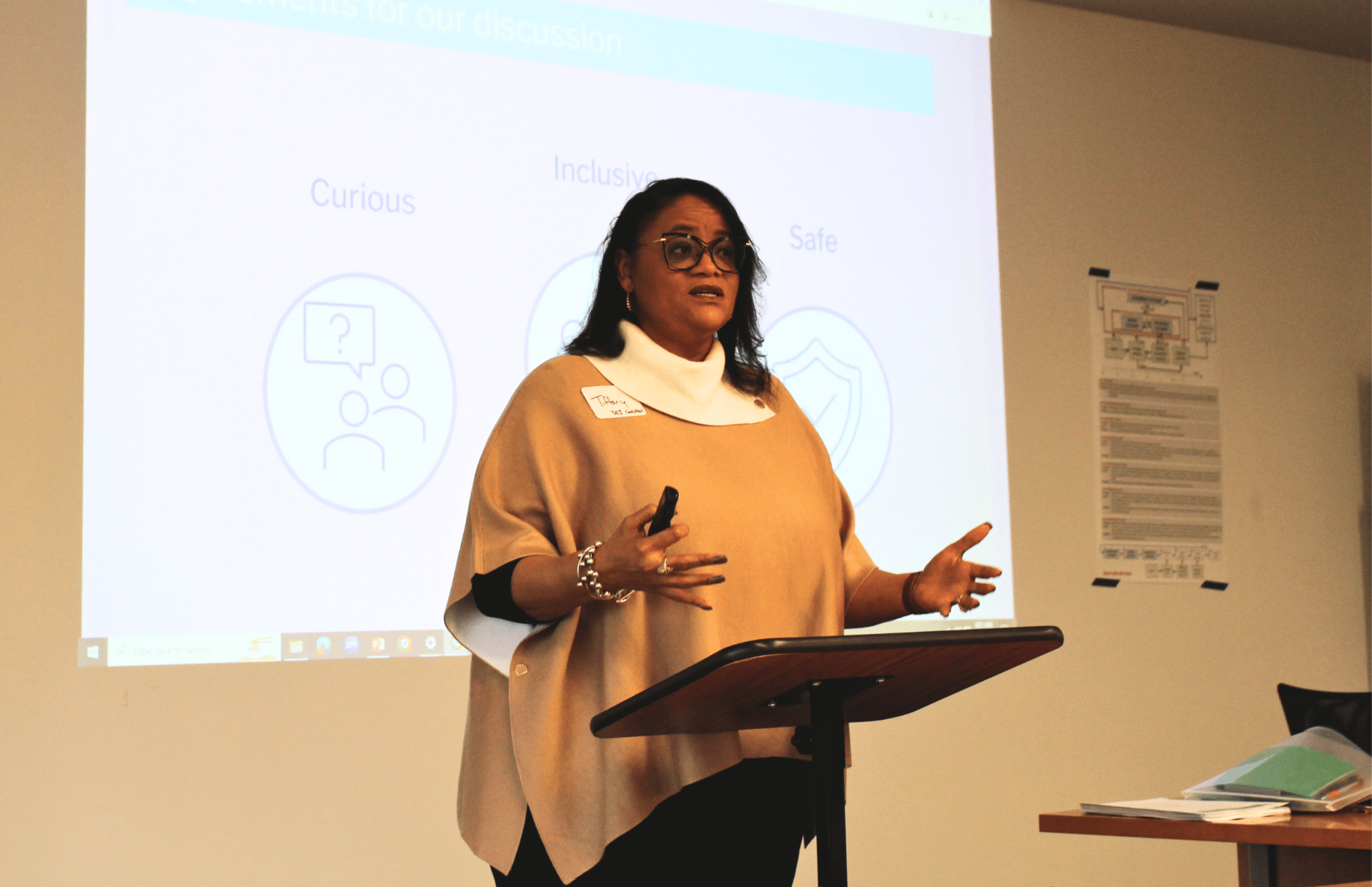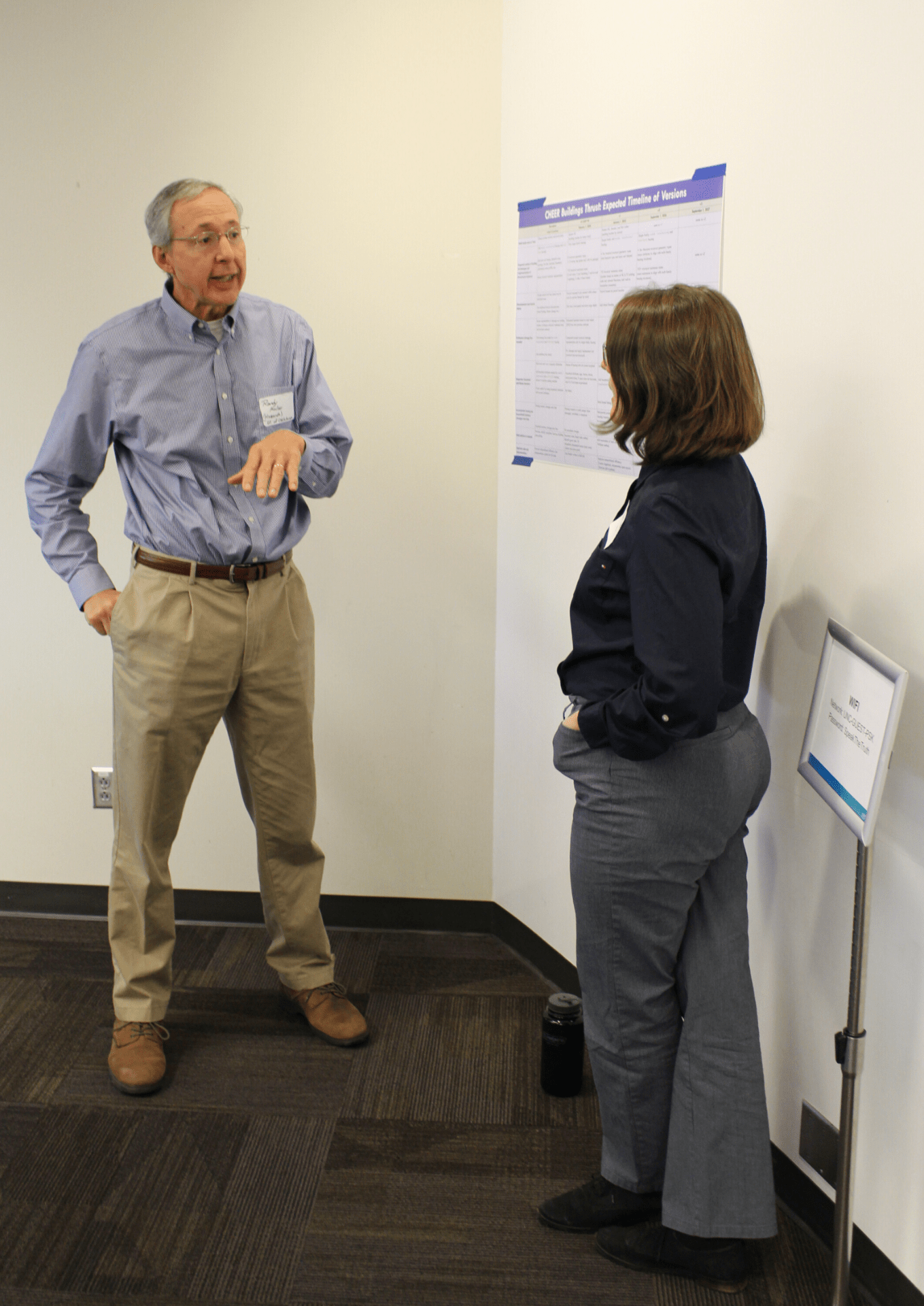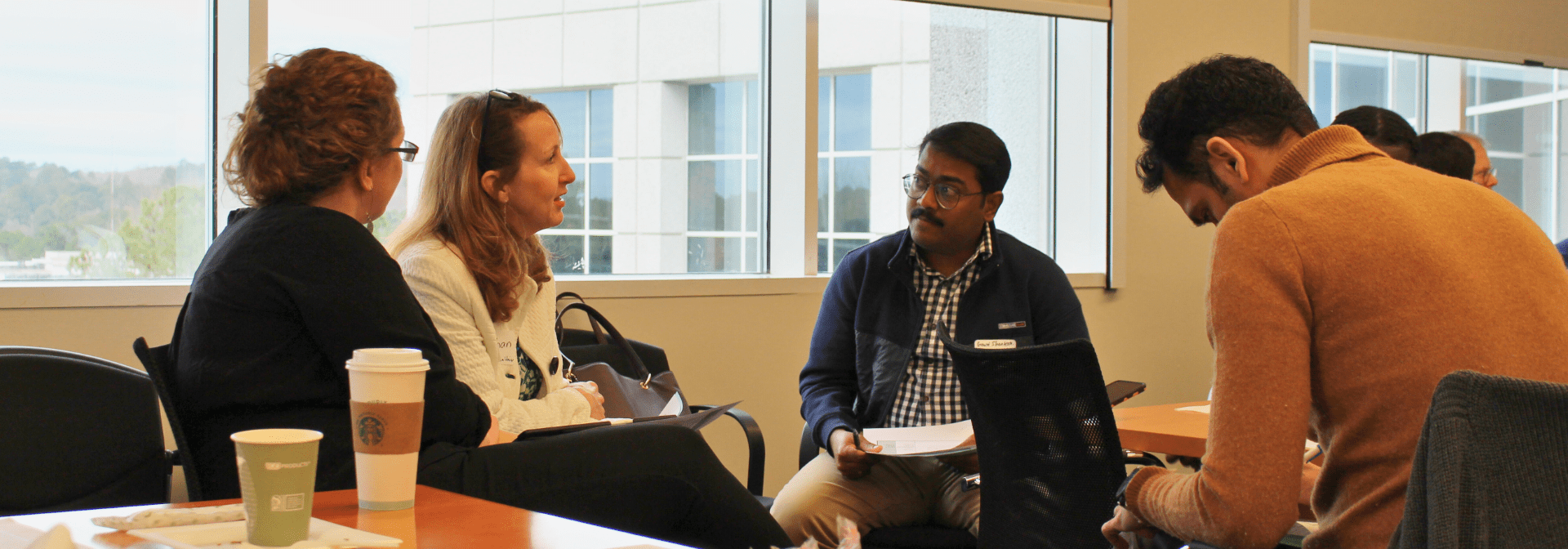Summary
More than 30 CHEER researchers, postdocs, students, and staff gathered at Renaissance Computing Institute in Chapel Hill, NC, on Friday, March 1, for a day of team building and research during the Hub’s second annual all-team meeting.
The meeting provided an opportunity for team members to connect in person–a first for newer members of the Hub–and focus on the theme of equity and integration across thrusts. It also was an opportunity to celebrate and strengthen the inclusive, supportive, and collaborative nature of the Hub.

The CHEER team poses outside the Renaissance Computing Institute in Chapel Hill, NC.
“This is an opportunity for members from across all of our universities to get together, discuss topics that cut across thrusts, and strengthen the bonds of our community,” said Rachel Davidson, the Hub’s PI.
This community building began the night before the meeting when the Hub hosted a welcome dinner and lively trivia competition.
The meeting began with a session led by Tiffany Galvin Green, the Hub’s diversity, equity, and inclusion consultant. “My role is to help maintain the integrity of the entire CHEER project,” Green said. “I help make sure that the Hub is not only thinking about addressing disparities and inequities in their case study communities but also practicing their research in inclusive ways.”

Tiffany Galvin Green, the Hub’s DEI consultant, led Hub members in several group activities.
Green said that it isn’t common for groups to reflect on how these values are carried out on their own teams. One of her goals for the meeting and for working with the Hub as a whole was to get team members thinking about equity and inclusion both internally and externally.
“It’s very rare that you have academics really come to terms with, ‘How am I actually working with my peers? How are we collaborating? Are we doing it in a way that is sustainable? Are we doing it in a way that’s most effective?” said Green. “We don’t talk about that a lot, and I’m glad that CHEER is willing to have these conversations.
The gathering also emphasized the Hub’s interdisciplinary nature. Individual ten-minute presentations from thrust leaders Brain Colle (Hazards), Ian Sue Wing (Economy), Joe Trainor (Households), A.R. Siders (Government), and Hesam Soleimani-Babakamali and Caroline Williams (Buildings) focused on the plans for the next couple years and how they intersect with other thrusts.
Following those presentations, Hub members could walk around the room and visit a poster that researchers from each thrust had prepared to discuss their plans and ask questions.

Members from each of the thrusts developed a poster to showcase their research.
While each area of the Hub’s research is highly specialized, one of the Hub’s strengths is how tightly integrated each thrust is to the overall STARR framework. For example, A.R. Siders, who leads the government thrust, said her team’s model looks at how each level of government—federal, state, and local—makes decisions about funding allocation.
“We’re thinking about what’s equitable and working on modeling different scenarios,” Siders said. “How do we think about what the priorities should be? Well, we really need the hazards and the buildings thrust to tell us, ‘If you do X, this is what will happen.’ This shows us how equity will play out in terms of the amount of damage that happens, which towns are affected, and so on. We wouldn’t be able to build that kind of model without all of those different disciplines as really clear examples.”
Naturally, these conversations are best had in person because such a setting engages team members in discussion and problem solving in a way that virtual venues cannot. However, the meeting was about more than exchanging knowledge and planning for the Hub’s future. The event also fostered a sense of belonging among team members.
“One of the things that I’m really focused on is making sure that everybody feels like they’re a part of the team,” said Meghan Millea, the Hub’s education director. “Coming into a project this big, it’s hard to feel like you’ve got enough of an understanding of what the project is to feel like you can contribute. I really want to make sure that the graduate students are in a position where they feel like they’re being valued.”

In-person opportunities for team-building and discussion were a highlight of CHEER’s annual meeting and fostered a sense of community within the Hub.
Abbey Hotard, a postdoctoral researcher at the University of Delaware, joined the Hub in October. She said that meeting the rest of the team reinvigorated her excitement about working on such a unique project.
“It is really challenging to think about coastal resilience in such a broad and systematic way, but it’s also exciting,” said Hotard. “What we’re doing is really unique and innovative. Looking at the big picture in such detail is something that we should all be very excited about.”


